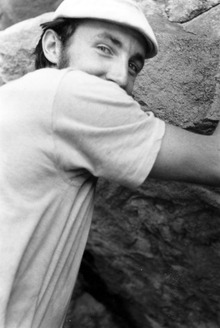
Carolynn Marie Hill is an American rock climber. Widely regarded as one of the leading competitive climbers, traditional climbers, sport climbers, and boulderers in the world during the late 1980s and early 1990s, she is famous for making the first free ascent of the difficult sheer rock face of The Nose on El Capitan in Yosemite Valley, and for repeating it the next year in less than 24 hours. She has been described as both one of the best female climbers in the world and one of the best climbers in the history of the sport. One of the first successful women in the sport, Hill shaped rock climbing for women and became a public spokesperson, helping it gain wider popularity and arguing for sex equality. Hill has publicized climbing by appearing on television shows and documentaries and writing an autobiography, Climbing Free: My Life in the Vertical World.

Alexander Huber is a German rock climber who is considered one of the greatest and most influential climbers in the history of rock climbing. Huber came to prominence in the early 1990s as the world's strongest sport climber after the passing of Wolfgang Güllich. He is the second-ever person to redpoint a 9a (5.14d) graded route by ascending Om in 1992, and has latterly come to be known as the first-ever person to redpoint a 9a+ (5.15a) graded route from his 1996 ascent of Open Air.
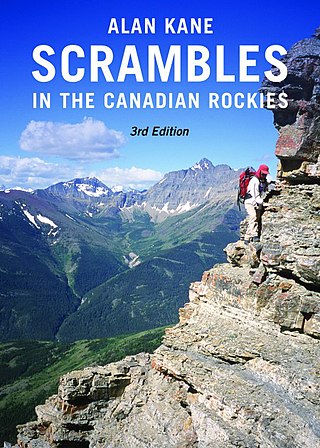
Climbing guidebooks are used by mountaineers, alpinists, ice climbers, and rock climbers to locate, grade, and navigate climbing routes on mountains, climbing crags, or bouldering areas. Modern route guidebooks include detailed information on each climbing route, including topo diagrams, route beta, protection requirements, and the ethics and style that are in place for a given climbing area.
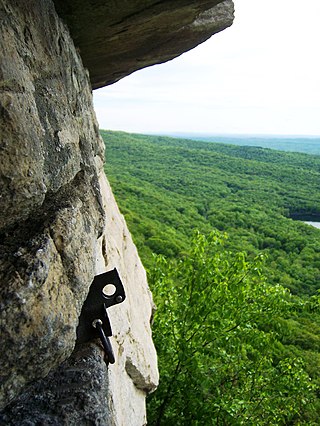
Clean climbing is rock climbing techniques and equipment which climbers use in order to avoid damage to the rock. These techniques date at least in part from the 1920s and earlier in England, but the term itself may have emerged in about 1970 during the widespread and rapid adoption in the United States and Canada of nuts, and the very similar but often larger hexes, in preference to pitons, which damage rock and are more difficult and time-consuming to install. Pitons were thus eliminated in North America as a primary means of climbing protection in a period of less than three years.
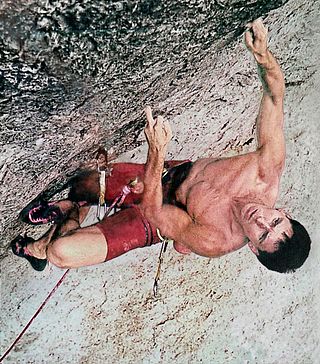
Wolfgang Güllich was a German rock climber, who is considered one of the greatest and most influential climbers in the history of the sport. Güllich dominated sport climbing after his 1984 ascent of Kanal im Rücken, the world's first-ever redpoint of an 8b (5.13d) route. He continued to set more "new hardest grade" breakthroughs than any other climber in sport climbing history, with Punks in the Gym in 1985, the world's first-ever 8b+ (5.14a), Wallstreet in 1987, the world's first-ever 8c (5.14b), and with Action Directe in 1991, the world's first-ever 9a (5.14d).
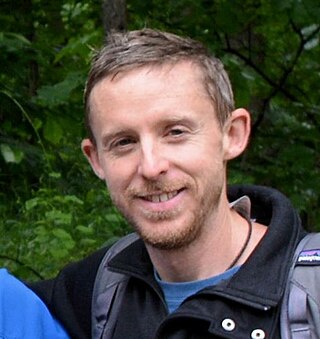
Tommy Caldwell is an American rock climber who has set records in sport climbing, traditional climbing, and in big-wall climbing. Caldwell made the first free ascents of several major routes on El Capitan in Yosemite National Park.
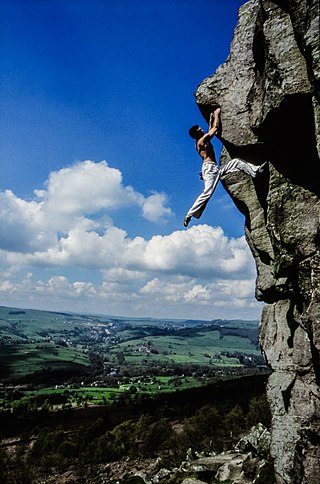
Jerry Moffatt, is a British rock climber and climbing author who is widely considered as being the best British rock climber from the early-1980s to the early-1990s, and was arguably the best rock climber in the world in the mid-1980s, and an important climber in the history of the sport.
Pete Livesey, was an English rock climber who raised the standard of technical difficulty in traditional climbing in Britain during the early to mid-1970s. Livesey was renowned for the intensity and competitiveness he brought to the development of his sport as well as a mischievous sense of humour, and during the mid-1970s, Livesey was regarded as Britain's leading rock climber.

Fritz Wiessner was a German American pioneer of free climbing. Born in Dresden, Germany, he immigrated to New York City in 1929 and became a U.S. citizen in 1935. In 1939, he made one of the earliest attempts to conquer K2, one of the most difficult mountains in the world to climb.

Beta is a climbing term that designates information about how to ascend a climbing route, and the specific climbing techniques required—and how to apply them—to overcome the key challenges encountered. Traditionally sourced in climbing guidebooks, online databases and apps now provide detailed climbing beta. The term is attributed to Texan climber Jack Mileski.

The Needles of the Black Hills of South Dakota are a region of eroded granite pillars, towers, and spires within Custer State Park. Popular with rock climbers and tourists alike, the Needles are accessed from the Needles Highway, which is a part of Sylvan Lake Road. The Cathedral Spires and Limber Pine Natural Area, a 637-acre (258 ha) portion of the Needles containing six ridges of pillars as well as a disjunct stand of limber pine, was designated a National Natural Landmark in 1976.

Ron Kauk is an American rock climber. Kauk is associated with Camp 4 in Yosemite Valley, where he lived for decades, now a resident of El Portal, California.

In the history of rock climbing, the three main sub-disciplines—bouldering, single-pitch climbing, and big wall climbing—can trace their origins to late 19th-century Europe. Bouldering started in Fontainebleau, and was advanced by Pierre Allain in the 1930s, and John Gill in the 1950s. Big wall climbing started in the Dolomites, and was spread across the Alps in the 1930s by climbers such as Emilio Comici and Riccardo Cassin, and in the 1950s by Walter Bonatti, before reaching Yosemite where it was led in the 1950s to 1970s by climbers such as Royal Robbins. Single-pitch climbing started pre-1900 in both the Lake District and in Saxony, and by the late-1970s had spread widely with climbers such as Ron Fawcett (Britain), Bernd Arnold (Germany), Patrick Berhault (France), Ron Kauk and John Bachar (USA).
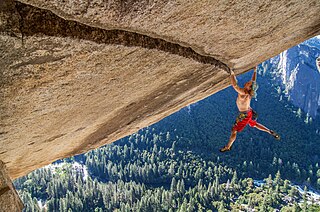
Separate Reality is a 66-foot (20 m) traditional climbing route in Yosemite National Park in California. The route is known for its exposed and dramatic crux that consists of a 20-foot (6.1 m) long crack in its horizontal roof. When it was first free-climbed by Ron Kauk in 1978, it was one of the first climbs in the world to have a grade of 7a+ (5.12a). In 1986, German climber Wolfgang Güllich free soloed the route, and the photographs by Austrian Heinz Zak became iconic in rock climbing history.

Jules Marquard Eichorn was an American mountaineer, environmentalist, and music teacher.

Alex Honnold is an American rock climber best known for his free solo ascents of big walls. Honnold rose to worldwide fame in June 2017 when he became the first person to free solo a route on El Capitan in Yosemite National Park, a climb described in The New York Times as "one of the great athletic feats of any kind, ever". Honnold also holds the record for the fastest ascent of the "Yosemite Triple Crown", an 18-hour, 50-minute link-up of Mount Watkins, The Nose, and the Regular Northwest Face of Half Dome. In 2015, he won a Piolet d'Or in alpine climbing with Tommy Caldwell for their completion of the enchainment of the Cerro Chaltén Group in Patagonia over 5 days.
Chipping is a rock climbing technique that uses a hammer and chisel to manufacture new or increased hand-holds on the natural rock to make a climbing route more feasible. It is a controversial technique due to both environmental issues, and a sense that it goes against the very challenge of free climbing. The practice was more common in the past, it is considered less acceptable in modern climbing.

Geoff Weigand is an Australian rock climber and road cyclist.

